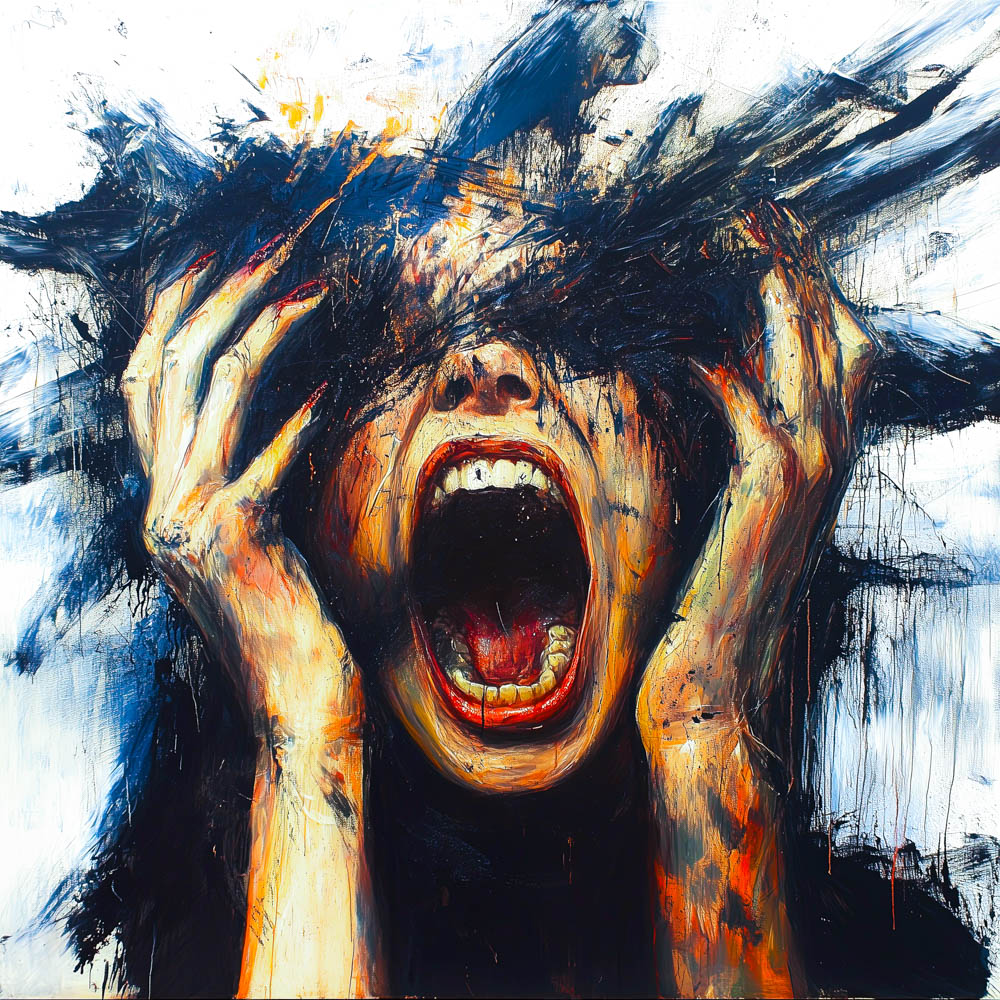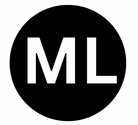Hey,
I grew up in a time when images still had to wait on film to be seen. Today, they are born, duplicated, distorted, and forgotten in milliseconds. Between these two states—waiting and abundance—I have found my path as an artist. Worpswede is my tool and my resonance chamber. Here, I work with others on a practice that does not pit photography, digitality, and AI against each other, but rather transforms them into a social process.
We live in times of dissolution. Work biographies that provided stability for a generation are fraying. Images—our collective mirrors—are disintegrating into endless variations until we no longer know which ones belong to us. Many people feel it in their bodies: a mixture of acceleration and fatigue. Anthropologist David Graeber called some modern activities “bullshit jobs” — work that does not reach the soul. AI will continue to plow this landscape. Not because machines are more “creative,” but because they confront us with the question of where meaning arises.
My suggestion as an artist is simple and radical: art not as a product, but as a practice. Not the image alone, but the process — shared, experiential, comprehensible. I call this social art processing: a workshop where images, people, and places come into relationship with one another. This idea is in line with Beuys’ social sculpture: everyone can create; society is malleable. At the same time, I learn from positions such as Christo: temporary constellations that do not need to “own” anything in order to have an effect. My means are photography, print, texture, color, voice—and yes, also AI, where it does not replace but contradicts: as a counter-image, as a question, as a mirror.
For me, the dissolution of images does not mean loss, but transition. The negative becomes a data field, the unique original becomes a network of relationships. In my lab, every analog sheet gets a digital twin—not a copy, but a counterpoint. In AI Mirror, a sentence can become an image, but the image returns with context: What data, what patterns, what blind spots contributed to it? This is how visual literacy grows: not as a technical show, but as educationin the original sense — the formation of judgment.
Education is central to me. In school and in the studio, I experience how important participation is for learning and dignity. Those who only consume become tired. Those who help shape things wake up. That’s why I’m opening up the process: Image Clinic (bring your picture, we’ll “operate” together), Data Confession (say three sentences about what is falling apart in your life), Social Stitching (we literally sew society together — fabric, tape, notes, prints). The end result is Process Proofs and Twin Proofs: tangible traces, signed, dated, transparent. The work is not the pose in the white cube, but the coherence of head and heart in action.
Philosophically, this means that I believe in self-efficacy and consciousness work, without esoteric shortcuts. “New Age” promised a lot; some of it was escapism. I am interested in grounding: breath, attention, conversation, craftsmanship. I read anthroposophy as an invitation to see human beings as beings in the process of becoming: not finished, but capable of giving form—including to themselves. When I speak of expanding consciousness, I do not mean escapes, but expanding connections: between heart and head, image and context, I and we, place and world.
Economically, this means that I do not sell an illusion of uniqueness, but rather lived processes with dignity. Income is not a betrayal of art; it is what makes the studio possible in the first place. We work with an open, clear model: small editions from the process (affordable), unique pieces for collectors (viable), events with a low threshold (accessible). Every dollar should have the same goal: more art as practice. No growth myth, but a cycle — between place, people, materials, stories.
Worpswede helps me close these circles. The historic colony was never just an idyll; it was a laboratory. Today, together with partners, we are transforming spaces — studio, gallery, hotel village — into workshops of the present. Through networks such as euroart, we build bridges: exchanges, paths to Italy, for example. Online, we translate this into a kaleidoscope of real and surreal spaces: not a business card, but a walk-in landing page. Each space has a purpose: to invite, empower, and deepen. Five steps, five stamps, a small gain in meaning.
Why all this? Because I believe that meaning is not delivered, but created. Technology — including AI — is neither enemy nor savior. It is material and timekeeper that forces us to choose: Do we want to forget faster or understand slower? Do we want even more beautiful surfaces or more coherent interiors? For me, self-reflection does not begin in the mirror of self-expression, but in joint actions that change something in the world—and us along with it.
If you want art to sell you something, you might be in the wrong place. If you want art to involve, challenge, touch, and empower you, then come. Bring a picture, a voice, a question. Take your time. Let something go. Take something with you. Call it social sculpture, social art processing, or simply working on the common good. For me, it’s the same thing: giving form so that we can recognize ourselves again.
I know that art can’t make every problem disappear. But I’ve often seen how small moments of coherence — when the head and the heart are in sync — can change people. A look that clears. A hand that regains the desire to create. A voice that trembled and now carries. That’s enough to keep going.
TIMES OF DISSOLUTION is the framework. Worpswede is the place. The doors are open.
ZEITEN DER AUFLÖSUNG
Ich bin in einer Zeit erwachsen geworden, in der Bilder noch auf Film warteten, um sich zu zeigen. Heute werden sie in Millisekunden geboren, dupliziert, verzerrt und vergessen. Zwischen diesen beiden Zuständen — dem Warten und dem Überfluss — habe ich meinen Weg als Künstler gefunden. Worpswede ist dafür mein Werkzeug und mein Resonanzraum. Hier arbeite ich mit anderen an einer Praxis, die Fotografie, Digitalität und KI nicht gegeneinander ausspielt, sondern in einen sozialen Prozess überführt.
Wir leben in Zeiten der Auflösung. Arbeitsbiografien, die eine Generation lang Halt gaben, fransen aus. Bilder — unsere kollektiven Spiegel — zerfallen in endlose Varianten, bis wir nicht mehr wissen, welches davon uns gehört. Viele Menschen spüren es im Körper: eine Mischung aus Beschleunigung und Müdigkeit. Der Anthropologe David Graeber nannte einen Teil der modernen Tätigkeiten „bullshit jobs“ — Arbeiten, die die Seele nicht erreichen. KI wird diese Landschaft weiter umpflügen. Nicht weil Maschinen „kreativer“ wären, sondern weil sie uns mit der Frage konfrontieren, wo Sinn entsteht.
Mein Vorschlag als Künstler ist einfach und radikal: Kunst nicht als Produkt, sondern als Praxis. Nicht das Bild allein, sondern der Prozess — gemeinsam, erfahrbar, nachvollziehbar. Ich nenne das Social Art Processing: eine Werkstatt, in der Bilder, Menschen und Orte in Beziehung treten. Diese Idee steht in der Linie von Beuys’ sozialer Plastik: Jede und jeder kann gestalten; Gesellschaft ist formbar. Zugleich lerne ich von Positionen wie Christo: temporäre Konstellationen, die nichts „besitzen“ müssen, um zu wirken. Meine Mittel sind Fotografie, Druck, Textur, Farbe, Stimme — und ja, auch KI, dort, wo sie nicht ersetzt, sondern widerspricht: als Gegenbild, als Frage, als Spiegel.
Auflösung der Bilder bedeutet für mich nicht Verlust, sondern Übergang. Aus dem Negativ wird ein Datenfeld, aus dem eindeutigen Original ein Beziehungsgeflecht. In meinem Labor erhält jedes analoge Blatt einen digitalen Zwilling — kein Abbild, sondern ein Widerwort. Im AI Mirror kann ein Satz zum Bild werden, das Bild aber kehrt mit Kontext zurück: Welche Daten, welche Muster, welche blinden Flecken haben daran mitgeschrieben? So wächst Bildkompetenz: nicht als Technik-Show, sondern als Bildung im ursprünglichen Sinn — Formung von Urteilskraft.
Bildung ist mir zentral. In der Schule wie im Atelier erlebe ich, wie wichtig Partizipation für Lernen und Würde ist. Wer nur konsumiert, wird müde. Wer mitgestaltet, wacht auf. Darum öffne ich den Prozess: Image Clinic (bring dein Bild, wir „operieren“ gemeinsam), Data Confession (sprich drei Sätze über das, was sich in deinem Leben auflöst), Social Stitching (wir nähen Gesellschaft wortwörtlich zusammen — Stoff, Tape, Notiz, Druck). Am Ende entstehen Process Proofs und Twin Proofs: greifbare Spuren, signiert, datiert, transparent. Das Werk ist nicht die Pose im White Cube, sondern die Kohärenz von Kopf und Herz im Tun.
Philosophisch bedeutet das: Ich glaube an Selbstwirksamkeit und an Bewusstseinsarbeit, ohne esoterische Abkürzungen. „New Age“ hat viel versprochen; manches davon war Flucht. Mich interessiert die Erdung: Atem, Aufmerksamkeit, Gespräch, Handwerk. Anthroposophie lese ich als Einladung, den Menschen als Werdewesen zu sehen: nicht fertig, sondern fähig, Form zu geben — auch sich selbst. Wenn ich von Bewusstseinserweiterung spreche, meine ich keine Escapes, sondern Erweiterung der Bezüge: zwischen Herz und Kopf, Bild und Kontext, Ich und Wir, Ort und Welt.
Ökonomisch heißt das: Ich verkaufe keine Illusion der Einzigartigkeit, sondern gelebte Prozesse mit Würde. Einnahmen sind kein Verrat an der Kunst; sie machen die Werkstatt erst möglich. Wir arbeiten mit einem offenen, klaren Modell: kleine Editionen aus dem Prozess (erschwinglich), Unikate für Sammler:innen (tragfähig), Veranstaltungen mit niedriger Schwelle (zugänglich). Jeder Euro soll das gleiche Ziel haben: mehr Kunst als Praxis. Kein Wachstumsmythos, sondern Kreislauf — zwischen Ort, Menschen, Materialien, Geschichten.
Worpswede hilft mir, diese Kreise zu schließen. Die historische Kolonie war nie nur Idylle; sie war Labor. Heute verwandeln wir zusammen mit Partnern Räume — Atelier, Galerie, Hotel Village — in Werkstätten der Gegenwart. Über Netzwerke wie euroart bauen wir Brücken: Austausch, Wege zum Beispiel nach Italien. Online übersetzen wir das in ein Kaleidoskop aus realen und surrealen Räumen: keine Visitenkarte, sondern eine begehbare Landingpage. Jeder Raum hat eine Aufgabe: Einladen, Befähigen, Vertiefen. Fünf Schritte, fünf Stempel, ein kleiner Gewinn an Sinn.
Warum das alles? Weil ich glaube, dass Sinn nicht geliefert, sondern erzeugtwird. Technik — auch KI — ist dabei weder Feind noch Erlöser. Sie ist Material und Taktgeber, der uns zwingt zu wählen: Wollen wir schneller vergessen oder langsamer begreifen? Wollen wir noch schönere Oberflächen oder kohärentere Innenräume? Für mich beginnt Ich-Reflexion nicht im Spiegel der Selbstdarstellung, sondern in gemeinsamen Handlungen, die etwas in der Welt verändern — und uns mit.
Wenn du willst, dass Kunst dir etwas verkauft, bist du hier vielleicht falsch. Wenn du willst, dass Kunst dich beteiligt, widerspricht, berührt und befähigt, dann komm. Bring ein Bild, eine Stimme, eine Frage. Nimm dir Zeit. Lass etwas los. Nimm etwas mit. Nenn es soziale Plastik, Social Art Processing oder einfach Arbeit am Gemeinsinn. Für mich ist es das gleiche: Form geben, damit wir uns wieder erkennen.
Ich weiß, dass nicht jedes Problem durch Kunst verschwindet. Aber ich habe oft erlebt, wie kleine Kohärenzen — Kopf und Herz im selben Takt — Menschen verändern können. Ein Blick, der sich klärt. Eine Hand, die wieder Lust aufs Machen bekommt. Eine Stimme, die zitterte und jetzt trägt. Das ist genug, um weiterzumachen.
TIMES OF DISSOLUTION ist der Rahmen. Worpswede ist der Ort. Die Türen stehen offen.

Immersive world of images
Immersive Welt der Bilder
Tell your story
Come to the lab, give us your voice, your pictures
Komm in das Labor, gib uns deine Stimme, deine Bilder
